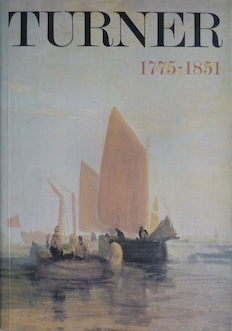|
08 XII 2024 |
5. England 1805-15
146 - Willows beside a Stream | |

| ||
|
These are a selection from the group of seventeen large oil sketches of subjects on or near the Thames in the Turner Bequest (Tate Gallery 2691-700, 2702-7, 5519); see also No. 154. All, though carried to a different degree of finish, are similar in technique, lightly painted over a dry chalky ground, and all are roughly similar in size save for the sketch for ‘Harvest Dinner, Kingston Bank', which only measures 24 x 36 in (Tate Gallery 2696). This last was used for the painting exhibited at Turner's gallery in 1809 and again in 1810 (Tate Gallery 491). Others are more loosely related to finished oil paintings exhibited in 1808, 1809 and 1810. A number of them are also related to drawings in the ‘Thames from Reading to Walton' sketchbook, datable c.1807 (T.B.XCV; cf. for example, pp.31 and 37 with No. 144, and p.35 with No. 146; there is a different view of Cleeve Mill, apparently the subject of No.145, on p.18, repr. Wilkinson 1974, p.78), while the composition of one example, ‘Trees beside a River, with a Bridge in the Middle Distance' (Tate Gallery 2692), is very close to that in the rather earlier ‘Studies for Pictures: Isleworth' sketchbook, sandwiched between lists of classical and Biblical subjects (T.B.XC-55v and 56; see Nos.80 and 94 for the dating of this sketchbook). There is reason to suppose that, contrary to Turner's usual practice, some of these sketches were at least begun out-of-doors. Thornbury (1862, I, p.169) prints some reminiscences of the son of Turner's 'oldest friend the Rev. Mr Trimmer', who had been out fishing with Turner when a child. 'He had a boat at Richmond ... From his boat he painted on a large canvas direct from Nature. Till you have seen these sketches, you know nothing of Turner's powers. There are about two score of these large subjects, rolled up, and now national property . . . There is a red sunset (simply the sky) among the rolls'. The last, probably the sadly darkened 'Sunset' (Tate Gallery 1876), is different in character from the works under discussion and is probably later, but the folded battered condition of many of the Thames sketches such as No. 144 supports the identification with the works mentioned by Trimmer. Though Turner did not complete his own cottage at Twickenham, across the river from Richmond, until 1813, he already had a second home at Isleworth, not that much further from Richmond, in 1804 or 5 (see No.80), and at Upper Mall, Hammersmith probably from late 1806 until 1811. John Gage has suggested (1969, pp.37-8) that this group of sketches was executed over a number of years, from about 1807 to as late as 'Crossing the Brook (No.164), but it seems equally possible that despite the differences between them they were all done at more or less the same time, Turner only trying this rather unusual size and technique for this sort of sketch as a limited experiment. Despite their differences they all seem to show the fresh approach to simple, everyday subjects that is reflected in the great change in his exhibited pictures in 1807 and 1808, after which such an elaborate recourse to nature would no longer have been necessary. The range is indeed wide. 'Cleeve Mill’ is treated just like a topographical watercolour, the centre being finished in detail while much of the primed canvas is left untouched. The direct, almost clumsy trees of 'Washing Sheep' are in strong contrast to the feathery ‘Willows beside a Stream' with its flurry of action in the left foreground, perhaps dogs attacking a stag, reminiscent of one of Rubens' paintings of Boar Hunts. This work is also available as a UVprint. An image generated by an AI Machine Learning Model Property of the artist. | ||
